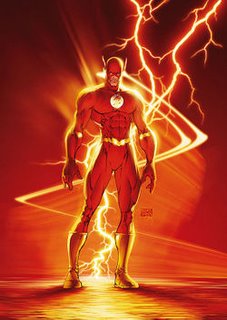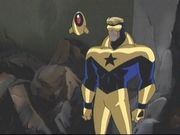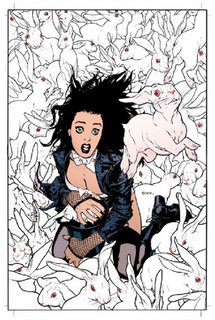Losing One's Head
WIRED magazine
Losing One's Head
It's a story as strange as anything PKD ever wrote - a body of work that includes the short stories behind the movies Blade Runner, Total Recall, and A Scanner Darkly. It involves, naturally, a robot, a group of confused humans, and a series of misunderstandings. The head was built by David Hanson, founder of Hanson Robotics. The self-described sculptor-roboticist, who has a degree from the Rhode Island School of Design and did some undergrad work in AI, specializes in creating amazingly realistic robot faces sheathed in a rubbery polymer he calls f'rubber. The bots have a wide range of facial expressions driven by dozens of tiny servomotors. They make eye contact with passersby through motion-tracking machine vision and can engage in complex conversations via AI speech software. They even recognize familiar faces.
It was PKD - the author - who drew Hanson to robotics in the first place. "Reading books like Valis motivated me to build robots that would help save humans from their own destructive tendencies," he says.
The creator of several robots, including the Albert Einstein head for the bot that appeared on the cover of Wired in January, Hanson spent $25,000 of his own money building his hero.
Hanson and software developer Andrew Olney studied the author's life and used his novels - particularly We Can Build You - as a blueprint for applying PKD's personality to the robot. The head won first place in a competition sponsored by the American Association for Artificial Intelligence, and the Smithsonian was planning to exhibit it this fall.
Until December, that is, when Google invited Hanson and Olney to demo the PKD head at company headquarters in Silicon Valley. Hanson had been traveling for weeks, making two trips to Asia and pulling 15 all-nighters in 40 days. "I got on the plane in Dallas at 5 in the morning, after getting maybe 45 minutes of sleep the night before," he recalls. "I stuck the bag containing the robot head in the overhead bin and fell asleep. I didn't even know we were changing planes in Las Vegas. The flight attendant woke me up, and I walked off the plane in a fog - with the robot head still in the overhead bin."
When Hanson arrived at the San Francisco airport, he finally realized he had left his bot behind. Hanson was determined not to lose his head, having already lost Philip K. Dick's. "I thought, 'OK, OK, everything's going to be cool; they're going to find this bag,'" he says. "There's no mistaking this bag - it's got a robot head in it. When you open it, it's just wires and flesh and a bearded dude's face."
On the ground, Hanson says, America West officials told him that the plane carrying PKD was en route to Orange County; the crew would look for his robot when it landed. They said PKD had turned up at the Las Vegas airport after all. It was packed in a secure box and would be put on the next flight to SFO. The flight landed safely, but the head didn't. Somewhere over the Sierra Nevada, it had vanished.
America West officials say they've looked everywhere and that the search continues. If the head doesn't reappear, they told Hanson, they may consider a "happy ending" scenario, like sponsoring a new bot. In the meantime, the head could be resting on a warehouse shelf at an Alabama salvage company that buys items unclaimed after 30 days. Hanson suspects the head was either stolen by an unscrupulous baggage handler or fell victim to an overzealous security guard who called in a bomb squad. "That would be a really strange ending," Hanson says, "if the head of a Philip K. Dick robot wound up being exploded by another robot."
- Tom McNichol



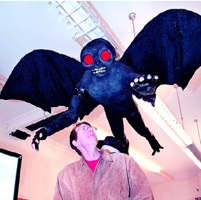






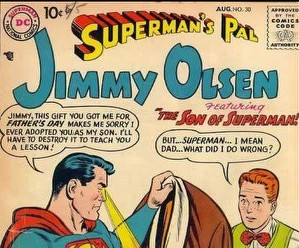

































 "Ancient History" opens w/ Stewart chasing the elusive Gentleman Ghost only to be one-upped by Hall, who saves his life. Shayera & Vixen are shown to have developed a strange catty, competitive relationship based around their affection for Stewart. The next day Vixen leaves Stewart in their apartment for a photo-shoot in Milan when she catches of the Shadow Thief sneaking into the apartment. A battle between Shadow Thief, Vixen, & GL ensues w/ GL being kidnapped by the Thief. Vixen calls Shayera to enlist her help & to warn her that the Shadow Thief warned that Shayera was next. Shayera & Vixen show up at the Midway City Museum where Carter Hall works & are confronted by the Shadow Thief who has Stewart strung up on the ceiling. More battle ensues w/ Hawkman showing up to battle the Shadow Thief w/ the aid of Shayera. During the battle Hawkman makes a one-off comment about how Shayera has "always been good w/ [a Thanagarian weaponon in the museum]." However, this does not stop the Shadow Thief from defeating the duo in battle. Shayera awakens to find herself, Hawkman, & GL tied up in the museum surrounding the Absorbricron, a complex Thanagarian database, found by Carter Hall on an excavation in Egypt where he discovered his true identity by touching it. Shadow Thief forces all three to simultaneously make contact w/ the device, resulting in a flashback explaining the truth about Katar & Shayera Hol's time in Egypt.
"Ancient History" opens w/ Stewart chasing the elusive Gentleman Ghost only to be one-upped by Hall, who saves his life. Shayera & Vixen are shown to have developed a strange catty, competitive relationship based around their affection for Stewart. The next day Vixen leaves Stewart in their apartment for a photo-shoot in Milan when she catches of the Shadow Thief sneaking into the apartment. A battle between Shadow Thief, Vixen, & GL ensues w/ GL being kidnapped by the Thief. Vixen calls Shayera to enlist her help & to warn her that the Shadow Thief warned that Shayera was next. Shayera & Vixen show up at the Midway City Museum where Carter Hall works & are confronted by the Shadow Thief who has Stewart strung up on the ceiling. More battle ensues w/ Hawkman showing up to battle the Shadow Thief w/ the aid of Shayera. During the battle Hawkman makes a one-off comment about how Shayera has "always been good w/ [a Thanagarian weaponon in the museum]." However, this does not stop the Shadow Thief from defeating the duo in battle. Shayera awakens to find herself, Hawkman, & GL tied up in the museum surrounding the Absorbricron, a complex Thanagarian database, found by Carter Hall on an excavation in Egypt where he discovered his true identity by touching it. Shadow Thief forces all three to simultaneously make contact w/ the device, resulting in a flashback explaining the truth about Katar & Shayera Hol's time in Egypt.  This episode is both fun & satisfying for several reasons. It subtly plays w/ comic book continuity, w/out being a slave to it. It introduces new elements that are true to the mythology of the DCAU, once just an interpretation of the DCU, but having grown into something in its own right. It provides a resolution to several plot-points laid out over the course of the JL cartoon's run of five seasons, tying directly into an earlier episode that seemed like a one-shot excuse to use the Golden Age Hawkman, w/out gratuitously tying in to the over-arching story of the Legion of Doom. & best of all, it was penned by none other than DC it-boy, Geoff Johns. Johns is probably best known for his current run on Infinite Crisis right now, but he's kind of made a name for himself for revitalizing characters once-thought to be secondary. Among these were Hawkman & Green Lantern (albeit the original Silver-Age character of Hal Jordan). Overall, this episode provides a break from the darker elements shown during season four's "Cadmus Project" story-arc, making it more suitable in tone for a younger audience while still retaining a complex enough narrative for adult viewers to enjoy.
This episode is both fun & satisfying for several reasons. It subtly plays w/ comic book continuity, w/out being a slave to it. It introduces new elements that are true to the mythology of the DCAU, once just an interpretation of the DCU, but having grown into something in its own right. It provides a resolution to several plot-points laid out over the course of the JL cartoon's run of five seasons, tying directly into an earlier episode that seemed like a one-shot excuse to use the Golden Age Hawkman, w/out gratuitously tying in to the over-arching story of the Legion of Doom. & best of all, it was penned by none other than DC it-boy, Geoff Johns. Johns is probably best known for his current run on Infinite Crisis right now, but he's kind of made a name for himself for revitalizing characters once-thought to be secondary. Among these were Hawkman & Green Lantern (albeit the original Silver-Age character of Hal Jordan). Overall, this episode provides a break from the darker elements shown during season four's "Cadmus Project" story-arc, making it more suitable in tone for a younger audience while still retaining a complex enough narrative for adult viewers to enjoy. 


